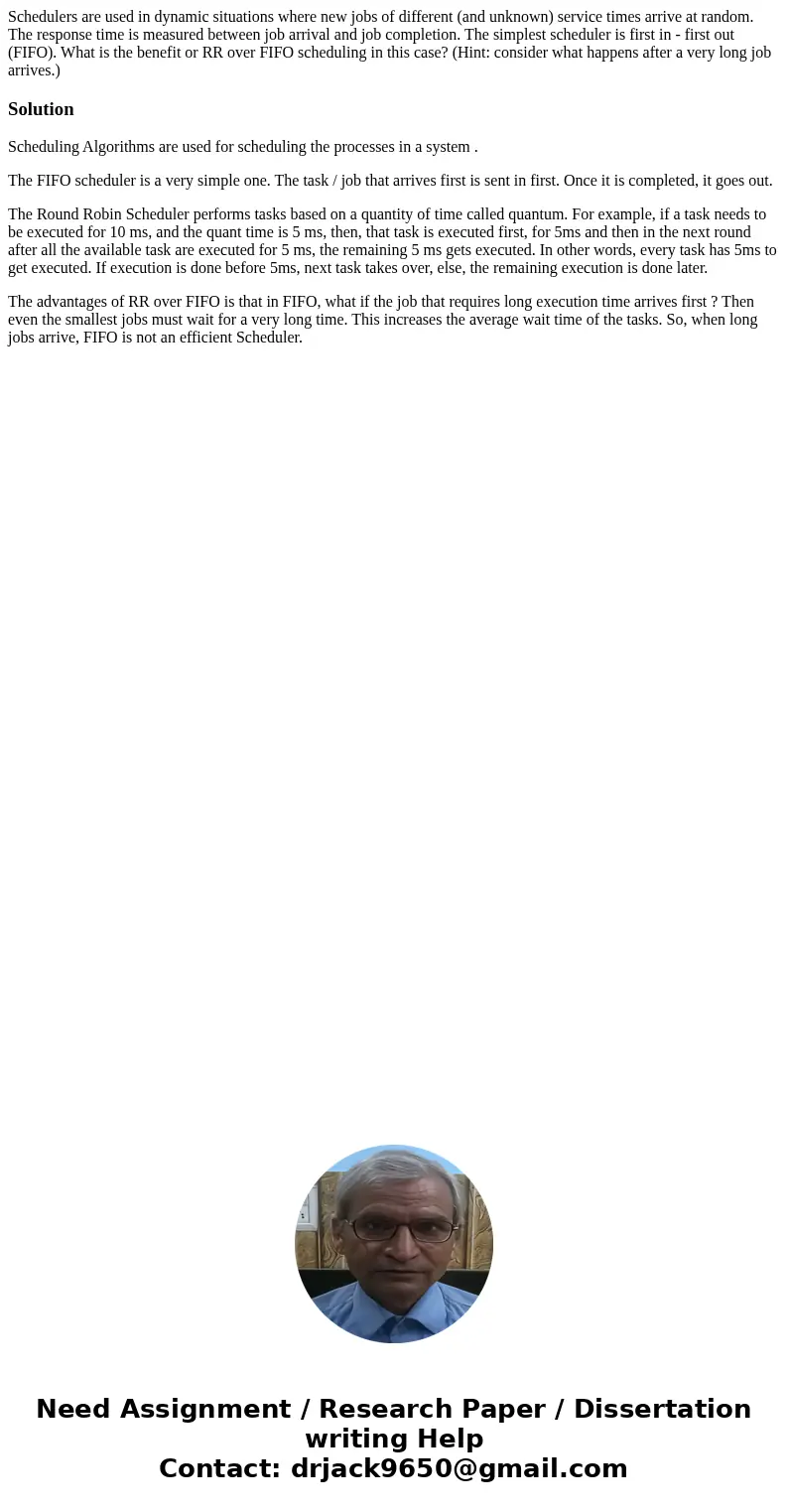Schedulers are used in dynamic situations where new jobs of
Schedulers are used in dynamic situations where new jobs of different (and unknown) service times arrive at random. The response time is measured between job arrival and job completion. The simplest scheduler is first in - first out (FIFO). What is the benefit or RR over FIFO scheduling in this case? (Hint: consider what happens after a very long job arrives.)
Solution
Scheduling Algorithms are used for scheduling the processes in a system .
The FIFO scheduler is a very simple one. The task / job that arrives first is sent in first. Once it is completed, it goes out.
The Round Robin Scheduler performs tasks based on a quantity of time called quantum. For example, if a task needs to be executed for 10 ms, and the quant time is 5 ms, then, that task is executed first, for 5ms and then in the next round after all the available task are executed for 5 ms, the remaining 5 ms gets executed. In other words, every task has 5ms to get executed. If execution is done before 5ms, next task takes over, else, the remaining execution is done later.
The advantages of RR over FIFO is that in FIFO, what if the job that requires long execution time arrives first ? Then even the smallest jobs must wait for a very long time. This increases the average wait time of the tasks. So, when long jobs arrive, FIFO is not an efficient Scheduler.

 Homework Sourse
Homework Sourse